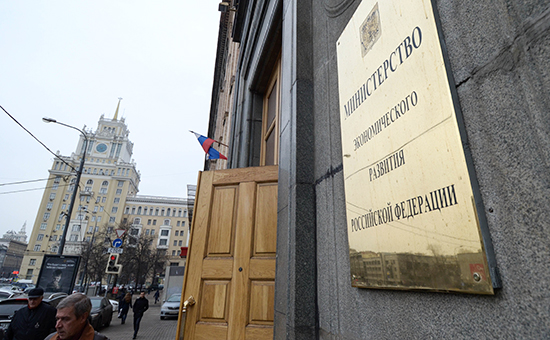
Photo: Yekaterina Kuzmina / RBC
A good plan
The implementation of the government anti-crisis plan adopted by the government on January 27, will reduce the fall of the Russian economy by 0.9 percentage points of GDP. This follows from the latest version of the socio-economic forecast from the Ministry of Economic Development, introduced by the government in late January, seen RBC.
Today, the forecast was discussed at a meeting with Prime Minister Dmitry Medvedev. According to the results of Economic Development Minister Alexei Ulyukayev said that the document was approved.
In accordance with the new version of the macroeconomic forecast, Russia’s GDP in 2015 will fall by 3%. In the previous version, presented in early December, so the decline in GDP of 0.8%. However, later Minister of Economic Development Alexei Ulyukayev said that this figure will be revised. In 2014, GDP grew by 0,6%.
The anti-crisis plan of the government is divided into four blocks – enhancing economic growth, support for sectors of the economy, social stability and the monitoring of the situation in the economy. The measures will also include an increase in budget loans region (up to 160 billion rubles.), Recapitalization of banks through DIA (1 trillion rubles.) And at the expense of the National Welfare Fund (250 billion rubles.), The increase in state guarantees for loans and bond loan companies (230 billion rubles.), support for import substitution, as well as measures to reduce the administrative burden on business. Separate registers that support the labor market, including retraining, are invited to send to 52.2 billion rubles. Regions can receive up to 30 billion rubles. on welfare payments to the unemployed. Also in terms spelled opportunity indexation index of inflation for 2014 (RUB 188,000,000,000.).
The money can help demand
The calculations are based on the Ministry of Economic Development that that the increase in budgetary credits regions and support industries will increase the rate of investment in fixed assets from all sources of funding by about 2 percentage points in comparison with the option that ignores the anti-crisis measures. In the December version macroeconomic forecast means that investments in fixed assets decreased by 3.5% in 2015.
amount The aggregate measures to support socially disadvantaged groups will provide additional growth in real incomes by about 1.1 n. f. “Even with a slight increase related inflation,” the document says. This will support the demand from the population and reduce the depth of the downturn in retail trade turnover by 1.2 percentage points and the volume of paid services to the population by 0.8 percentage points According to the previous forecast drop in retail trade turnover was expected 3.8% drop in the volume of paid services – by 3,8%.
The improvement in investment in fixed assets, an increase in industrial production and the relative recovery in demand population will reduce the amount of reduction in imports of goods by about 2.5 percentage points To a lesser extent implemented measures resulted in an increase of exports of goods, the document says.
How much should you spend
On the anti-crisis measures The Ministry of Finance is willing to spend in the first quarter, only 20 billion rubles. of the anti-crisis fund and 53 billion rubles. of the NWF. The rest – after authorities optimize the state program, previously told RBC officials who participated last week in meetings at the site of the ministry. On this basis, will be amended in the current budget.
According to Ulyukayev on Wednesday, budget design yet to be discussed. Parameters of the budget will be discussed at a separate meeting with the Prime Minister. According to him, there is no formal decision on the reduction of even 10% of budget expenditures in 2015 and. “I’m not sure that all costs must be reduced,” – said Ulyukayev.
According to him, the macroeconomic forecast presented by the Ministry of Economy, envisages a deficit of 3.8% under the current budgetary rules. It can be fully financed from the Reserve Fund. According to him, the size of the lost revenues amount to 2.3 trillion rubles., Mainly due to oil and gas revenues.
No comments:
Post a Comment